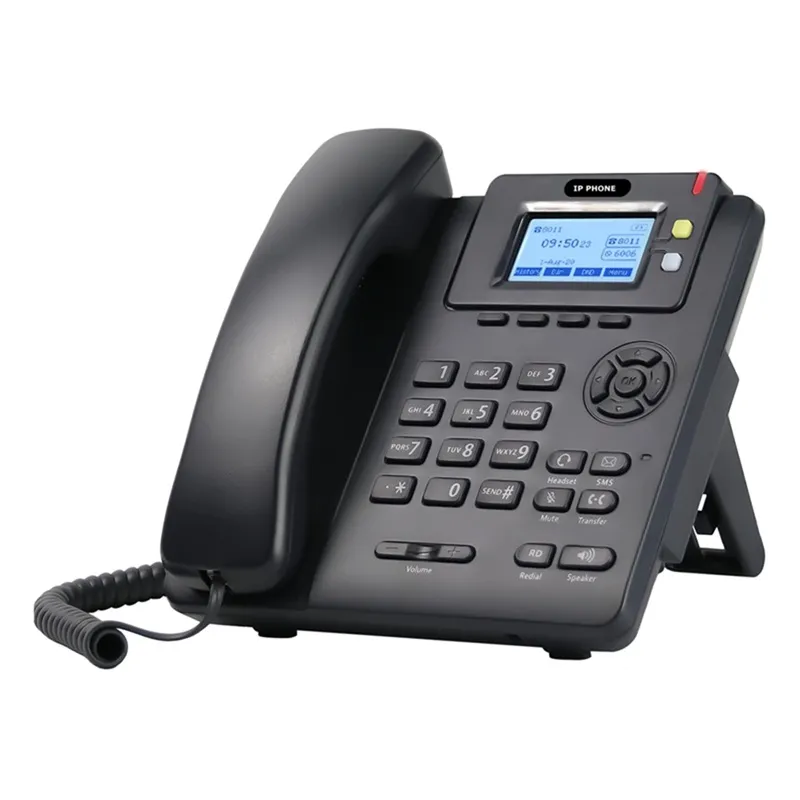Are you considering making the switch to a VoIP phone system for your home or small business? With its cost-saving benefits and advanced features, VoIP is an attractive option for many. However, the process of setting up a VoIP phone system may seem overwhelming at first. But fear not! In this comprehensive guide, we will walk you through the step-by-step process of setting up your VoIP phone system.
What is a VoIP Phone System?
Before we dive into the setup process, let’s clarify what a VoIP phone system is and how it differs from traditional analog phones. A VoIP phone system, or Voice over Internet Protocol, uses the internet to transmit audio as data packets. Unlike traditional analog phones that require a direct connection to a phone jack, VoIP phones connect to the telephone network through a VoIP provider via the internet. This allows for more scalability and flexibility in office setups.
Step 1: Assess Your Network and Internet Connection
Before diving into the setup process, it’s essential to ensure that your network and internet connection can support a VoIP phone system. Conduct a network speed test to determine if your connection meets the recommended bandwidth requirements of approximately 100 kbps upload and download per line. Additionally, assess factors such as jitter, packet loss, and connection stability. A wired internet connection, such as fiber or cable, is preferred for optimal call quality. Consider configuring Quality of Service (QoS) settings to prioritize VoIP traffic and minimize latency and packet loss.
Step 2: Choose the Right VoIP Hardware
Investing in the right VoIP hardware is crucial for a seamless setup and optimal call quality. Depending on your needs and preferences, you can opt for VoIP desk phones or headsets. High-end VoIP desk phones, like the Polycom VVX601, offer excellent call quality and advanced features. Alternatively, you can choose more affordable options if basic calling functionality is sufficient. If you prefer to use your existing analog phones, you can utilize an Analog Telephone Adapter (ATA) to digitize the analog signals and connect them to your VoIP network. Another cost-effective option is to use a business phone app, also known as a softphone, which eliminates the need for dedicated hardware.
Step 3: Find the Right VoIP Provider
Choosing the right VoIP provider is crucial for a successful setup and getting the most out of your VoIP phone system. Look for a provider that offers the features and functionalities that align with your business needs. Features to consider include advanced call routing, auto attendant, call analytics, call pop, built-in CRM integration, IVR, voicemail to text, and affordable international calling rates. Nextiva, for example, offers a comprehensive suite of VoIP features that cater to businesses of all sizes, along with a reliable network and excellent customer support.
Step 4: Obtain a Business Phone Number
Next, you will need to obtain a business phone number for your VoIP phone system. Depending on your VoIP provider, you may have the option to port your existing phone number or choose a new local or toll-free number. Local phone numbers are suitable for businesses with a limited market area, while toll-free numbers can lend a professional and trustworthy image to your business. Vanity numbers, which spell out specific words, are also available for added memorability. Nextiva offers a wide range of business phone numbers, including local, toll-free, and virtual numbers, and provides free number porting for existing phone numbers.
Step 5: Set Up Your VoIP Hardware
Once you have your VoIP hardware and provider in place, it’s time to set up your VoIP phone system. The specific steps will depend on the hardware you have chosen and your network setup. VoIP desk phones and handsets typically require plugging in the AC adapter, connecting the phone to the switch or router using an Ethernet cable, and waiting for the phone to initialize. For wireless VoIP headsets, you may need to attach an Electronic Hook Switch (EHS) cable to enable one-touch answer functionality. It’s important to follow the manufacturer’s instructions for each device to ensure a smooth setup process.
Step 6: Test Your VoIP Lines
Before fully deploying your VoIP phone system, it’s crucial to test your VoIP lines to ensure optimal audio quality, low latency, and connection stability. Make test calls to assess the clarity and consistency of calls, check for any significant delays or dropped calls, and evaluate the overall performance of your VoIP system. It’s recommended to test your lines during periods of high network activity to identify potential issues related to network congestion. For the best call quality, a wired Ethernet connection is preferable over Wi-Fi. Additionally, consider calling a diagnostic service number to confirm your caller ID and further validate the functionality of your VoIP system.
Step 7: Train Your Staff to Maximize VoIP Features
To fully leverage the features and functionalities of your VoIP phone system, it’s essential to train your staff. Many small businesses may be unfamiliar with the robust capabilities of VoIP systems, so investing time in training can significantly improve productivity and customer service. Nextiva offers an extensive library of training videos, user manuals, and online guides to help your team navigate the VoIP interface and utilize its features effectively. Additionally, their customer support team is available for one-on-one guidance and assistance with any issues that may arise.
Conclusion
Setting up a VoIP phone system doesn’t have to be a daunting task. By following these step-by-step guidelines, you can seamlessly transition to a VoIP phone system and enjoy the cost savings and advanced features it offers. Assess your network and internet connection, choose the right VoIP hardware, find a reputable VoIP provider, obtain a business phone number, set up your hardware, test your VoIP lines, and train your staff to maximize the benefits of your VoIP phone system. With the right approach and support, your VoIP setup will be effortless, and your business communication will reach new heights.







